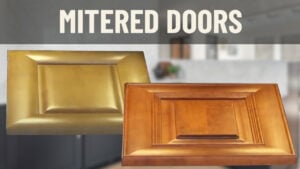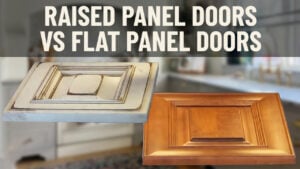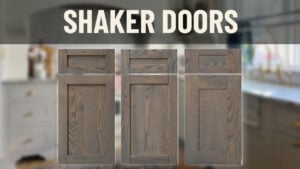Brian explains the difference between a mitered cabinet door and a mortise and tenon cabinet door. It’s important to note that mitered doors are not available with inset cabinetry. Listen in for other tips and tricks regarding these different door construction methods. Comment, give us a call, or reach out to your Cabinet Coach with any questions. We hope you enjoy your new cabinets!




Thank you very helpful
Hi..my builder installed mitered doors cabinets 3 months ago. White Ultracraft Oakland park door in white. House had heat on before installation on 68 degrees. Now 3 months in…the entire kitchen has open cracks on each corner….u can put your finger nails in it….not the usual hairline …..the cabinets looks HORRIBLE now.
Is that sounds normal to you?
I would like your expertise opinion.
Thank u
Mitered doors will open (and close) based on ambient humidity (or lack of it) in the home. Because mitered doors are glued and joined across the grain (the mitered joint), the door cant expand there as the wood picks up and gives off moisture due to humidity. The framing of the door then becomes stressed and “bulges” in the middle of the door (furthest from the joints), creating what the industry terms the “pickle barrel” effect…the door actually becomes wider in the middle than at the top and bottom. This can cause door binding issues on full overlay/frameless cabinets. To help prevent the pickle barrel issue, reputable door manufacturers actually engineer their doors to open (and close) with humidity. On the doors we sell (Conestoga Wood Specialties), it is totally within spec to have the inside of the miter (losest to the panel) open enough to almost slide a dime into the gap. A gap on the inside of the miter indicates too MUCH moisture in the home and gaps at the outer corners of the joint indicate to little. Much like any wide wooden picture frame or any other mitered joint, the joint is much more subject to “movement” than on a traditional mortise and tenon door and if you are putting the cabinets in a location prone to high humidity or drastic swings in humidity, the results can be less than pleasing (think: lake or oceanfront home, non-climate controlled home, etc. For painted doors, the look of the open miter joints can be really jarring, but that does not make them “out of spec”. Your manufacturer would have to answer that question. However, when we sell painted doors, we try VERY hard to educate the customer on the pitfalls of painting solid wood, particularly mitered doors, and we steer them towards all MDF doors instead. So, I cannot answer if what you are seeing is able to be covered under your manufacturer’s warranty, but I can say it is not uncommon at all in mitered doors and unless the joint itself has failed (framing can flex and the glue in the joint has let go), the gap in the corner is not generally enough to be considered a flaw. Wood is organic, always moving and expanding/contracting, and gaps like this “come with the territory”. There is nothing the manufacturer can do to prevent it and were they to replace them, they would probably do it again. Consistent climate control is CRITICAL with mitered solid wood doors. Keep the moisture consistent and low by running heat and AC. As soon as you open your windows to let the spring (wet) air in, you are asking for the joints to move a bit.
Hope this helped.